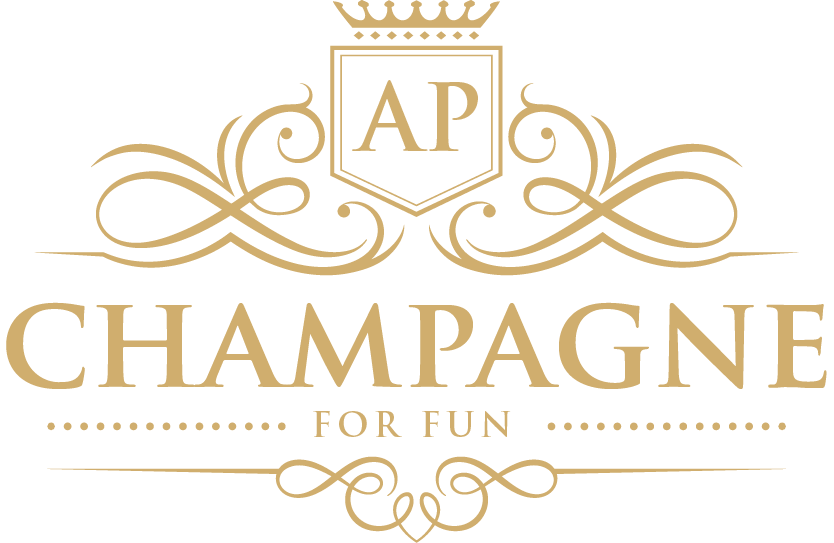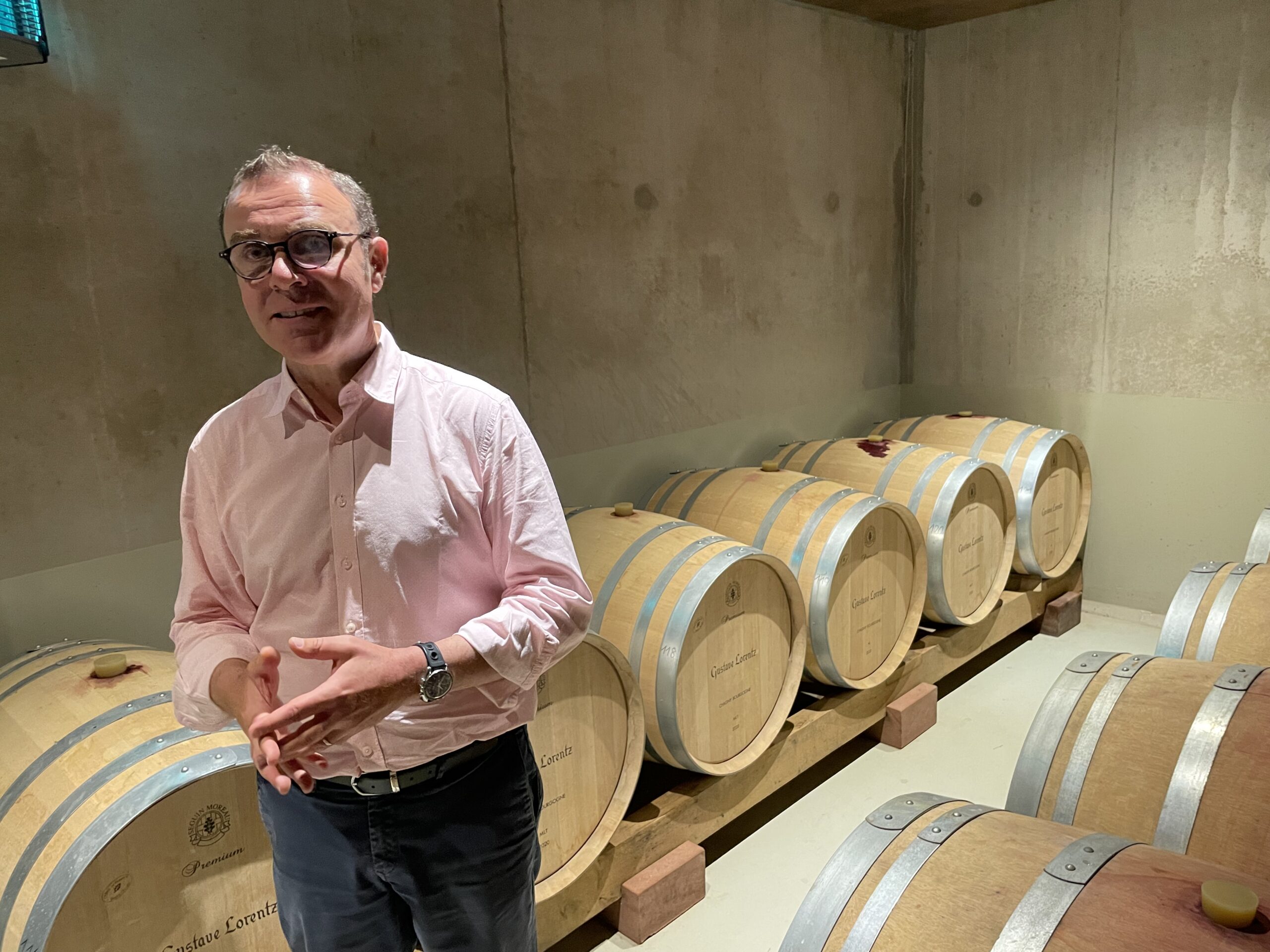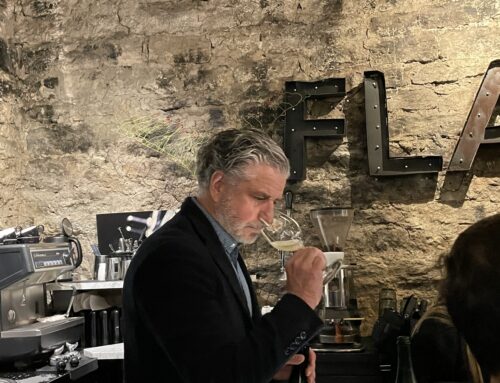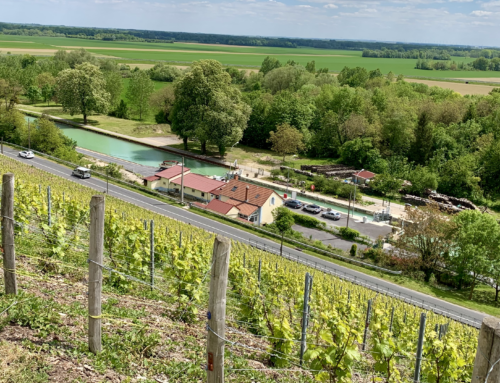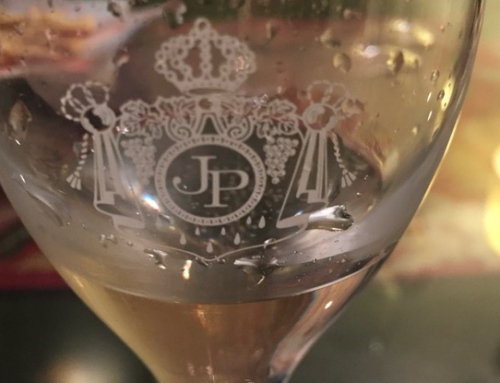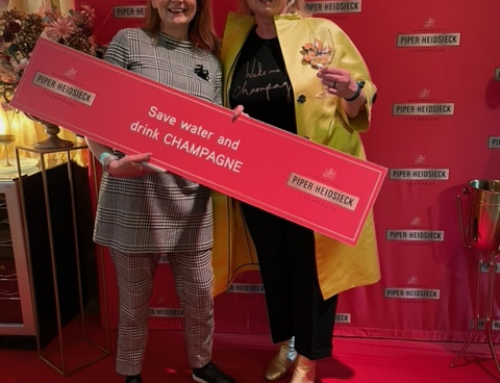Our wine tour in Alsace gave me a story about crémant d’Alsace, the sparkling story of Gustave Lorentz.
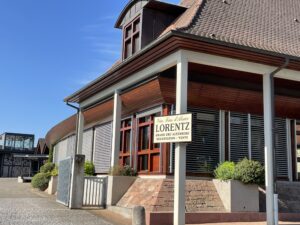
Since 1920, Alsace is the first wine region in the world where grape names were used on the wine label.
In 1962 the Alsace AOP was approved and in 1976 the Crémant d’Alsace AOP. There is a third one in Alsace – the Alsace Grand Cru.
Alsace is an area of white grapes. Pinot Noir is the only red allowed to be grown. Chardonnay, the very common champagne grape, is grown on only 1% of the area and is only used in AOP Crémant d’Alsace sparkling wines.
Our wine trip to Alsace with sommelier Kalle Müller was full of emotions as always. 15 wineries during the working week. Traveling with Kalle is not only fun and entertainment, but serious work and learning. The group is small and expectations for proper behavior are high. Nevertheless, travel weeks with Kalle are the most laughable of the year. The company is just so good.
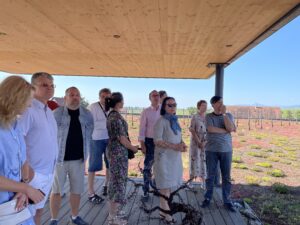
On the roof top
Gustave Lorentz:
1 family, 1 village, 7 generations of winegrowers
Maison Gustave Lorentz is our sixth winery on the morning of the third day of the trip. As Madam Rosé, I have done my homework before the trip and I know which houses are making sparkling wine. In most cases, such interest in sparkling wines is a surprise to the host. The same in Alsace. Maison Gustave Lorentz produces wines whose fame is far ahead of crémant: Grand Cru, Lieux-dits, Nobel Rotted Sweet wines, organic wines – good wines for good taste. Other people write about them. Let it be said here that the Gustave Lorentz winery produces various high-quality wines. The winery’s vineyards include 12.8 hectares of Grand Cru Altenberg de Bergheim and 1.75 hectares of Grand Cru Kanzelberg.
My expectation was on crémants.
In addition to good terroir, the winery has 7 generations of experience. The Lorentz family was noted as Ribeauville wine merchants as early as the 30 Years War. It is easier for an Estonian to understand this length of history than to say that the University of Tartu was founded at the same time. The history of the Lorentz winery in Bergheim begins in 1748.
“The essence of our wines stems from the close relationship between grape variety, terroir and climate.”
The Gustave Lorentz winery is a real gem. Gustave Lorentz’s Export Manager Mr. Pascal Schielé took us to the roof with a wonderful view – the roof garden. It took quite a while before the morning mind solved the mystery of where the grape roots go in the roof garden. After all, grapes have very deep roots to get water and nutrients in cramped and dry conditions. Where do vine roots go in a rooftop garden?The vine roots will not go anywhere from this roof garden. This garden is a decoration.
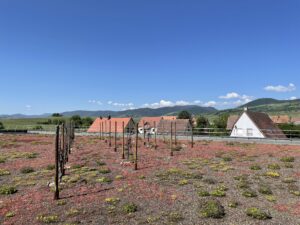
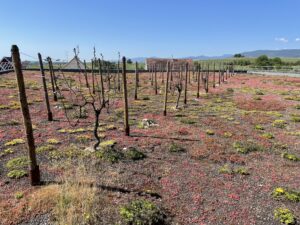
The view of the surroundings takes
your breath away.
Crémant d’Alsace brut
AOC Crémant d'Alsace
Grapes: Chardonnay 60%, Pinot Blanc 20%, Pinot Noir 20%
Chardonnay, Pinot Noir, Pinot Blanc and Pinot Gris are also permitted grapes
for making champagne. This sparkling wine is crémant because champagne is
made nowhere else in the world than Champagne. However, some crémant can
taste as good as champagne.
Every winery knows which glasses are best for its wine.
Gustave Loretnz has great sparkling wine glasses. Crémant d'Alsace brut has
a nice clear yellow color, small cheerful persistent bubbles playing in
the sun shining through the window.
The aroma caresses the nose with the smell of apple cake, the aroma of
fresh lemon and Estonian summer apple Valge Klaar is on my nose.
The taste is citrusy, the brightness of the lemon peel is softened by the
depth of the cake.
Crémant is made using the traditional method. The sparkling wine matures
in the skins sur latte for 2 years. Residual sugar 7.11 g/l
A very pleasant start to the day, anyway.
Crémant d’Alsace Zéro Dosage Vintage 2019
Organic wine.
This crémant is clear, with a pleasant yellow color and the bubbles last a
long time in the glass. The aroma is more fruity than the previous crémant.
The apple is no longer an early summer Valge Klaar, but rather an extremely
ripe autumn red apple.
In the taste, the ripe apple is replaced by a more acidic apple, the fresh
acidity of citrus pampers the taste buds. Minerality adds pleasure.. Zéro
dosage is a modern trend in sparkling wine, where the wine is bone dry and
there is almost no residual sugar, the liqueur d'expedition, which is added
after separating the lees from the bottle, is completely unsweetened.
Therefore, zéro dosage sparkling wines are freshly acidic. Here the
residual sugar is 0.4 g/l.
Quite often when I taste zero dosage sparkling wine, I remember a story I
heard at a beautician. The young beautician said that her partner once won
champagne at the institution's party. "Well, you know, the real champagne.
Something Tom was." I ask, is it Dom Perignon? I get the answer: "Yes, yes,
it was Tom's champagne". Then the story got sad: "Well, we thought that if
the champagne was so expensive, we opened on New Year's Eve. And you can't
imagine how horrible it was. So sour. Like sauerkraut water!". There is no
arguing about the taste, but high-quality zéro dosage sparkling wine is a
trend maker and a good stimulus for the taste buds.
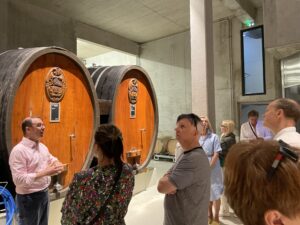
Cremant d’Alsace Rosé
AOC Crémant d’Alsace
Grape: 100% Pinot Noir
Madam Rosé's opinion is that if there are no bubbles in the wine, it is a
waste of the grapes. And if the sparkling wine is rosé, then it is always
preferred. This may sound like a self-restriction, but I don't drink still
wine or drink spirits or beer. However, I taste them at school, on wine tours
and at fairs. I know there are super good still wines and interesting spirits,
be it cognac or whisky. But I still stick to my preferences. Sparkling wine
and, if possible, rosé. Especially good if the rosé is 100% Pinot Noir. No
wonder then, when I admire the beautiful salmon pink bubble in my glass.
Blackcurrant, red wild berries and red orange peel can be felt in the aroma.
The taste has a pleasant lingonberry, pleasant acidity, mouth-filling creamy
bubble. The aftertaste has a minerality next to the lingonberries. Residual
sugar 6.7 g/l
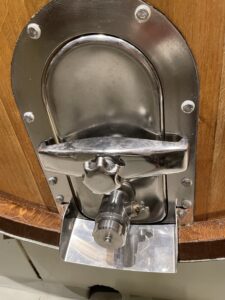
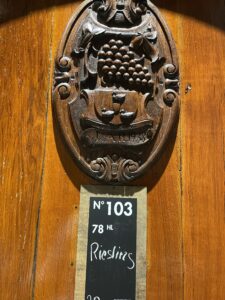
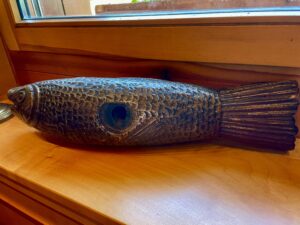
Gustave Loretnz winery
So what?
This is not the story of Maison Gustave Lorentz. Not at all. This is my very special and short and lovely insight into glass of bubbles. Winery Gustave Lorentz produces quality wines for New York restaurants and for best wine bars in China. White wines from Riesling and red barrel-aged from Pino Noir are on the top in most competitions and wine reviews. Again, this is not my story. I am happy with zero dosage, organic and rosé and bubbles. They all are available in Estonia, check it out in Bestwine.
Manufacturer: Maison Gustave Lorentz
Region: Alsace, France
